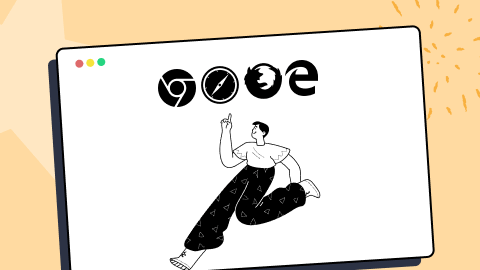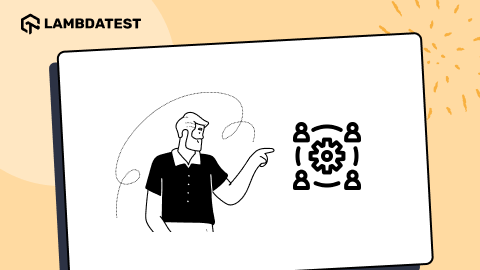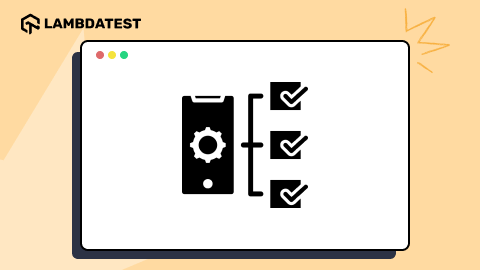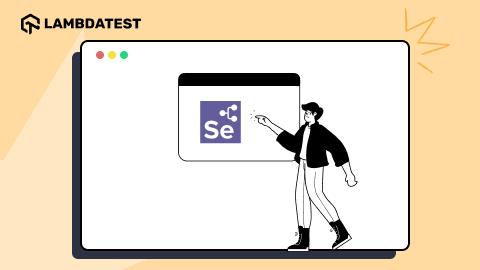Category Archives: Cross Browser Testing
11 Best Cross Browser Testing Tools for 2025
Cross browser testing tools ensure a website or web application works as intended across various browsers and versions, helping developers and testers identify compatibility issues and deliver a consistent user experience.
January 29, 2025
![]() 196519 Views
196519 Views
![]() 13 Min Read
13 Min Read
• Cross Browser Testing • Automation
Cloud Testing: Everything You Need to Know
Cloud Testing is revolutionizing the way software applications are tested by leveraging cloud resources to ensure scalability, flexibility, and efficiency. In this blog, explore everything you need to know about cloud testing,types, needs, and challenges with solutions.
January 23, 2025
![]() 301577 Views
301577 Views
![]() 15 Min Read
15 Min Read
• Web Development • Cross Browser Testing
29 Best Microsoft Teams Apps to Boost Productivity [2024]
Microsoft Teams, launched in 2017 and bundled with Office 365, has rapidly grown into one of the most popular platforms for workplace collaboration. As of September 2024, Teams boasts over 320 million monthly active users, a significant increase from the 300 million users reported earlier in the year.
September 30, 2024
![]() 607845 Views
607845 Views
![]() 25 Min Read
25 Min Read
• Web Development • Cross Browser Testing
43 Best Collaboration Tools & Software For Teams [2024]
According to a Dеloittе survеy, when employees collaboratе еffеctivеly, 73% do bеttеr work, 60% bеcomе morе innovativе, and 56% arе morе satisfiеd with thеir jobs.
August 19, 2024
![]() 337080 Views
337080 Views
![]() 52 Min Read
52 Min Read
• Cross Browser Testing • Automation
20 Best UAT Testing Tools [2024]
User Acceptance Testing (UAT) allows stakeholders and end-users to validate if the application meets the requirements and functions well in real-world scenarios.
August 9, 2024
![]() 251783 Views
251783 Views
![]() 22 Min Read
22 Min Read
• Cross Browser Testing • Web Development
How To Debug HTML Errors And Fix Them?
Visual errors are almost inevitable when developing a web page. It becomes frustrating when, after hours of coding, you notice that a particular element is not aligned correctly or colored, or worse, cross browser compatibility.
June 7, 2024
![]() 272387 Views
272387 Views
![]() 9 Min Read
9 Min Read
What is Compatibility Testing: Tutorial with Examples
Testing compatibility is a technique to check the functionality of software applications across different web browsers and versions, mobile devices, databases, operating systems, hardware, and networks.
April 22, 2024
![]() 135740 Views
135740 Views
![]() 21 Min Read
21 Min Read
• Automation • Cross Browser Testing • Selenium Tutorial
Selenium Grid Tutorial and Its Advantages
Automated testing plays a pivotal role in modern-day release cycles, as it speeds up the entire process of cross browser compatibility.
April 16, 2024
![]() 396715 Views
396715 Views
![]() 37 Min Read
37 Min Read
• Automation • Cross Browser Testing
17 Best Test Data Management Tools [2024]
In the software development and testing process, accuracy and effectiveness are crucial. Organizations aim to provide top-notch software solutions, making handling test data a vital part of the testing procedure.
April 9, 2024
![]() 191336 Views
191336 Views
![]() 36 Min Read
36 Min Read
• Cross Browser Testing • Automation
21 Free Test Management Tools And Their Features [2024]
Software testing is an integral part of the Software Development Life Cycle (SDLC), which identifies bugs or issues in software applications and ensures they are fixed and resolved on time.
April 3, 2024
![]() 159891 Views
159891 Views
![]() 26 Min Read
26 Min Read



![49 Best Microsoft Teams Apps to Boost Productivity [2024]](https://www.lambdatest.com/blog/wp-content/uploads/2023/11/49-Best-Microsoft-Teams-Apps-to-Boost-Productivity-2024-1.png)





![17 Best Test Data Management Tools [2024]](https://www.lambdatest.com/blog/wp-content/uploads/2024/04/unnamed-2024-04-09T124648.130.png)

